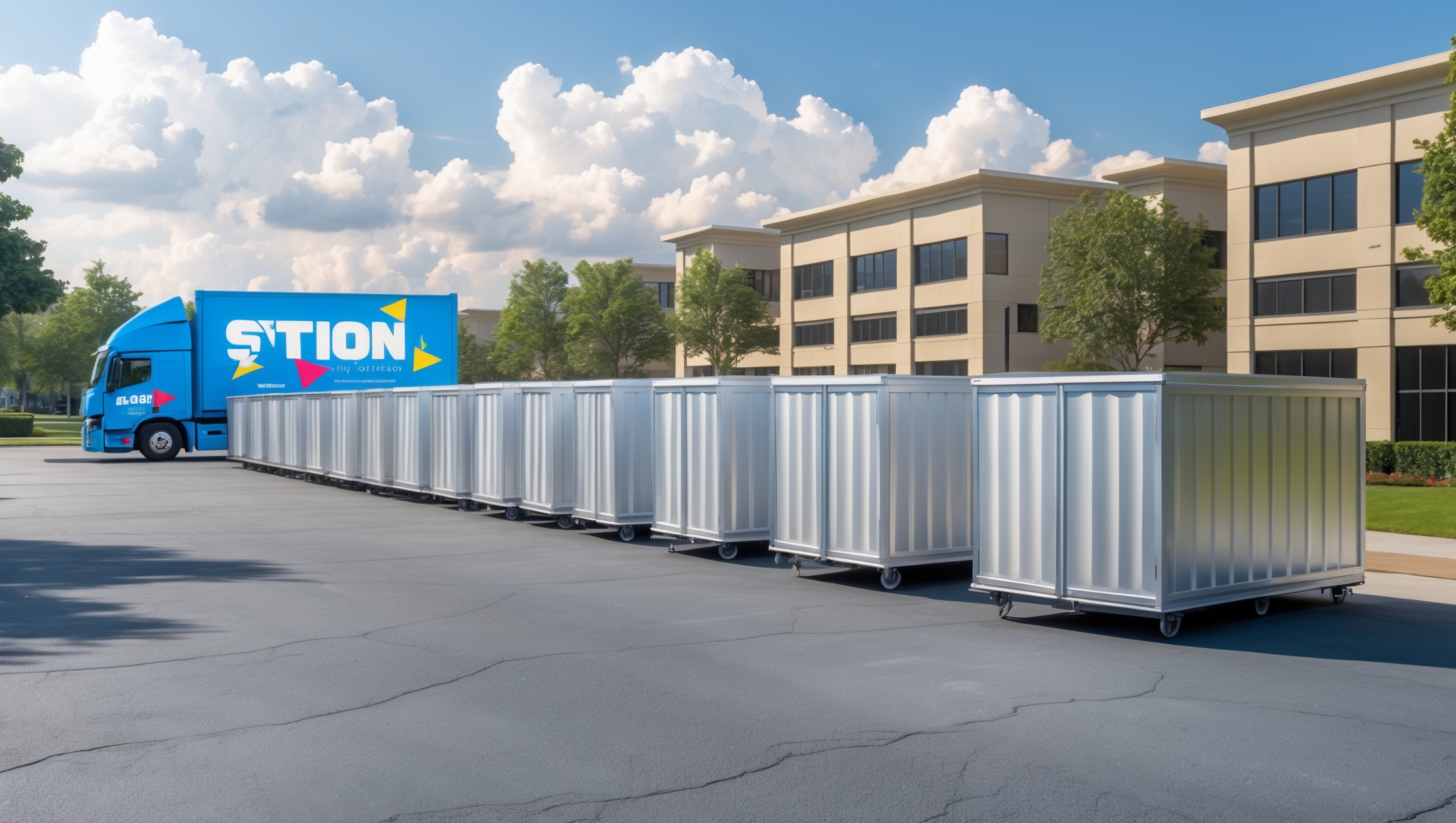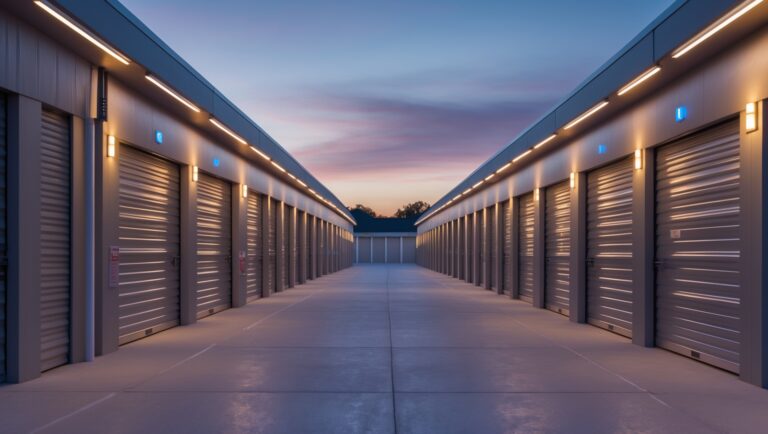A Step-by-Step Guide to Launching Mobile Storage Services: From Fleet Setup to Customer Delivery
Introduction: The Rise of Mobile Storage Solutions
As the moving and storage industry evolves, customer expectations for flexibility and convenience are at an all-time high. Enter mobile storage services: portable units delivered directly to customers’ doors for on-site storage or later transport to secure facilities. Whether serving homeowners in transition, businesses needing flexible warehousing, or contractors managing job site equipment, mobile storage is rapidly expanding beyond its early niche. For established self-storage operators and ambitious entrepreneurs alike, launching mobile storage services is a natural next step—but it’s a process that requires more than just buying a few containers and a truck. From selecting the right equipment and building efficient delivery logistics to regulatory navigation and ensuring a seamless customer experience, each phase presents unique challenges and opportunities. This guide delivers a comprehensive roadmap for moving and storage professionals ready to capitalize on the mobile storage trend, sharing practical, step-by-step strategies to launch, optimize, and scale a profitable mobile storage operation.
1. Market Analysis: Is Mobile Storage Right for Your Business?
1.1 Understanding the Target Customer
Success begins with a clear grasp of who will use your mobile storage services. Typical customers include:
- Residential movers needing flexible timelines
- Renovators requiring on-site storage during projects
- Businesses seeking extra inventory space
- Contractors managing tools and materials on job sites
Identify underserved segments in your area—rural homeowners, college students, military families, or businesses with seasonal fluctuations.
1.2 Evaluating Local Competition
Survey your region for national franchises (e.g., PODS, 1-800-PACK-RAT), local providers, and moving companies with portable options. Analyze their pricing, service areas, delivery times, and unit types. Look for gaps such as:
- No providers serving certain zip codes or commercial districts
- Poor customer reviews on communication or reliability
- Limited container sizes or outdated fleet
1.3 Regulatory Considerations
Check city and county regulations on portable storage placement, required permits, and allowable delivery times. Some municipalities restrict street or driveway placement, impose time limits, or mandate specific container characteristics (e.g., color, signage, reflectors). Understand these rules before investing in equipment.
2. Selecting the Right Mobile Storage Units
2.1 Container Types and Sizes
Mobile storage units come in various materials and dimensions, each with pros and cons:
- Steel containers (similar to shipping containers): High durability and security, heavy to transport, prone to condensation.
- Composite/fiberglass units: Lighter, weather-resistant, easier to maneuver, typically less secure than steel.
- Wood-framed with aluminum skin: Lightweight, cost-effective, may require more maintenance.
Common sizes include 8’, 12’, 16’, and 20’ lengths, with 8’ widths and 7–8’ heights. Consider offering at least two sizes to accommodate different customer needs.
2.2 Essential Features
Today’s customers expect more than a simple box. Prioritize units with:
- Weatherproof seals to prevent moisture ingress
- Lockable, tamper-resistant doors
- Ventilation ports to reduce condensation
- Non-slip floors for safer loading
- Interior tie-down points for furniture or commercial equipment
2.3 Sourcing and Branding
Compare new vs. refurbished units for cost and longevity. Consider custom branding—paint, decals, or wraps—to reinforce your company’s identity and help with theft prevention. Work with trusted suppliers who can provide maintenance support and spare parts.
3. Fleet Setup: Trucks, Trailers, and Equipment
3.1 Choosing Your Delivery Vehicles
Most mobile storage providers use either:
- Rollback trucks (like tow trucks): Ideal for heavier steel containers, offer smooth loading but higher upfront cost.
- Pickup trucks with tilt-bed trailers: More affordable, flexible, require careful driver training.
- Specialty hydraulic lifts: Purpose-built for gentle placement on uneven terrain.
Balance capacity, fuel efficiency, and maneuverability—urban areas may demand smaller vehicles, while rural customers need longer-range trucks.
3.2 Essential Accessories
Equip your fleet with:
- Heavy-duty straps and chains
- Wheel chocks and stabilizing blocks
- LED warning lights and reflective tape for safety
- GPS tracking for both vehicles and containers
- Mobile device mounts for navigation and order management
3.3 Maintenance and Inspection Protocols
Implement a strict pre-trip inspection checklist for each delivery. Regularly service hydraulic systems, brakes, tires, and loading equipment. Schedule quarterly deep cleans for both vehicles and containers to maintain your professional image.
4. Delivery and Pick-Up Logistics
4.1 Efficient Routing and Scheduling
Invest in route optimization software to minimize drive time and fuel costs. Batch deliveries in the same neighborhood when possible. Build buffers for traffic, weather, and customer delays.
4.2 Site Assessment and Customer Communication
Before delivery, confirm that the site is:
- Level and accessible for your vehicle size
- Clear of low-hanging branches or wires
- Within legal placement zones (not blocking sidewalks or fire hydrants)
Send customers a pre-delivery checklist and request photos of the placement area. Offer a window of arrival and real-time tracking where possible. Clear, proactive communication reduces failed deliveries and customer frustration.
4.3 Loading and Placement Best Practices
Train drivers to:
- Use spotters or backup cameras for precise placement
- Deploy stabilizers before tilting or rolling off units
- Place wheel chocks to prevent movement
- Provide a quick orientation to customers on locking and accessing the unit
Always document the condition of the unit at drop-off and pick-up with photos.
5. Legal Compliance and Insurance Essentials
5.1 Licensing and Permits
Mobile storage operators typically require:
- Commercial vehicle registrations
- DOT numbers for interstate deliveries
- Local business licenses and, in some cities, special portable storage permits
Consult with a transportation attorney or permit service to ensure compliance.
5.2 Insurance Coverage
Protect your business with these policies:
- Commercial auto insurance: Covers your delivery fleet
- General liability: Protects against property damage or injury
- Inland marine insurance: Covers containers and contents in transit
- Contents insurance (optional): Offer to customers for added peace of mind
Require customers to sign a detailed rental agreement outlining your liability limits and their responsibilities.
6. Pricing Strategy and Revenue Management
6.1 Building Your Price Model
Successful mobile storage pricing typically includes:
- Monthly rental fee per unit (based on size and type)
- Delivery and pick-up charges (distance-based or flat rate within zones)
- Additional fees for expedited service, long-term storage, or extra mileage
Analyze local competitors and calculate your own break-even point, including equipment depreciation, insurance, labor, and fuel costs. Consider introductory offers to attract early adopters.
6.2 Payment Collection and Billing Automation
Use cloud-based software to automate invoicing, recurring payments, and overdue reminders. Accept credit cards, ACH, and other digital methods for customer convenience. Offer online account portals for rental extensions or scheduling pickups.
7. Technology Integration for Operations and Customer Experience
7.1 Booking and Order Management Systems
Invest in a software platform that handles:
- Online reservations and availability
- Automated dispatch and driver assignments
- Inventory tracking for containers in the field
- Customer notifications and feedback collection
Integrated systems reduce errors, speed up service, and improve data-driven decision-making.
7.2 GPS and Asset Tracking
Install GPS trackers on both vehicles and mobile storage units. Benefits include:
- Real-time monitoring of fleet locations
- Enhanced security for high-value contents
- Faster recovery if a unit is lost or stolen
Some platforms can generate automatic customer notifications when a unit is en route or delivered.
8. Marketing Your Mobile Storage Service
8.1 Targeted Online Advertising
Mobile storage is a digital-first purchase for most customers. Invest in:
- Google Ads targeting local moving and storage keywords
- Social media ads for home improvement and small business audiences
- Mobile-friendly landing pages with instant quoting tools
8.2 Partnerships and Referral Programs
Build relationships with:
- Real estate agents and property managers
- Remodeling contractors
- Local businesses needing flexible storage
Offer referral incentives—discounts, gift cards, or revenue sharing—to partners who send new customers your way.
8.3 Reputation and Review Management
Encourage happy customers to leave reviews on Google, Yelp, and industry directories. Respond promptly to all feedback, positive or negative. High ratings are critical for trust in a competitive market.
9. Customer Service: Setting Expectations and Handling Issues
9.1 Onboarding and Support
Provide clear, step-by-step instructions for:
- Accessing and securing the mobile unit
- Preparing items for storage (moisture prevention, weight limits)
- Scheduling pickups or returns
Maintain a responsive phone and chat support line. Use automated reminders for payment, pickup, and container care.
9.2 Damage Claims and Dispute Resolution
Have a documented process for handling claims of damaged or lost items. Require photographic evidence and conduct prompt investigations. Offer fair compensation in accordance with your rental agreement and insurance coverage.
10. Scaling and Optimizing Your Mobile Storage Business
10.1 Expanding Your Fleet and Service Area
Monitor demand trends to determine when to purchase additional containers or vehicles. Expand into new neighborhoods, cities, or commercial segments only after perfecting logistics in your core market.
10.2 Diversifying Service Offerings
Consider:
- Long-term storage at your facility after pickup
- On-site secure storage for contractors or events
- Specialty units (climate-controlled, oversized for equipment)
Listen to customer feedback to guide new service development.
10.3 Continuous Improvement
Solicit customer feedback and employee insights to identify process bottlenecks. Invest in staff training, software upgrades, and fleet maintenance for steady, sustainable growth.
Conclusion: Building a Future-Ready Mobile Storage Operation
Launching a mobile storage service is a dynamic, multi-stage journey that combines logistics, technology, customer service, and compliance. By carefully selecting your containers, building a reliable delivery fleet, and integrating smart systems for dispatch, billing, and customer communication, you can set your business apart from competitors offering static, one-size-fits-all storage. The key is to blend operational efficiency—through robust maintenance, optimized routing, and clear protocols—with a customer-centric approach that anticipates needs and resolves issues swiftly. Don’t neglect the importance of local regulations, insurance coverage, and transparent rental agreements, which form the foundation for legal, financial, and reputational protection.
As the storage market continues to shift towards mobility and flexibility, providers who can deliver seamless, tech-enabled services while maintaining a personal touch will capture a growing share of residential, commercial, and contractor clients. Whether you’re expanding an existing storage facility or building a new business from scratch, use the steps in this guide to avoid common pitfalls, delight your first customers, and position your operation for long-term success. With a thoughtful launch strategy and a commitment to continuous improvement, your mobile storage business can become a trusted partner in your community’s moves, renovations, and projects for years to come.






